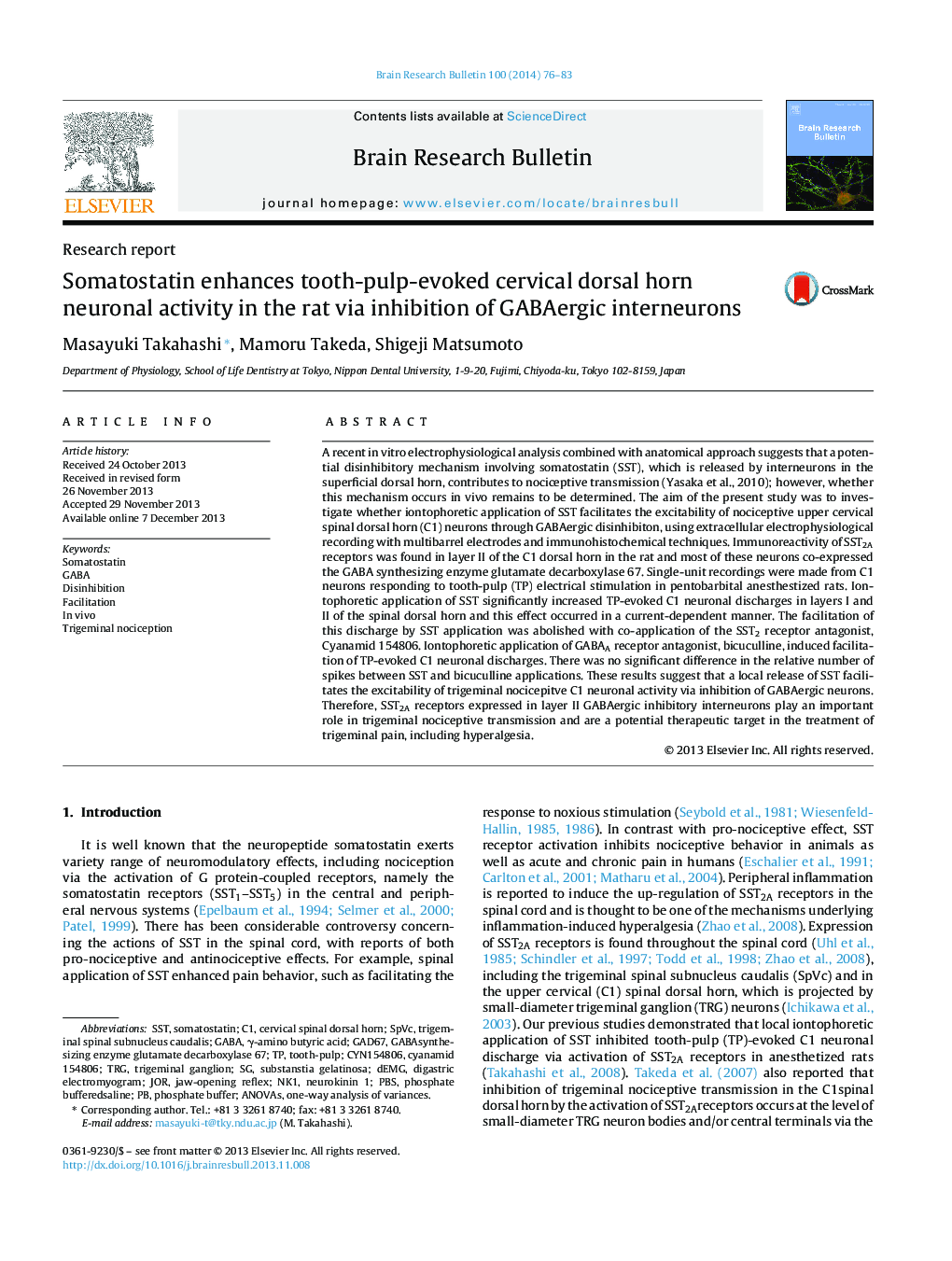| کد مقاله | کد نشریه | سال انتشار | مقاله انگلیسی | نسخه تمام متن |
|---|---|---|---|---|
| 4318854 | 1613255 | 2014 | 8 صفحه PDF | دانلود رایگان |

Highlight
• Somatostatin (SST) facilitate excitability of tooth-pulp evoked C1 neurons.
• SST2a receptor(R) immunoreactive C1 dorsal horn neurons co-expressed GAD67.
• SST2AR expressed GABAergic interneurons contributes to trigeminal nociception
A recent in vitro electrophysiological analysis combined with anatomical approach suggests that a potential disinhibitory mechanism involving somatostatin (SST), which is released by interneurons in the superficial dorsal horn, contributes to nociceptive transmission (Yasaka et al., 2010); however, whether this mechanism occurs in vivo remains to be determined. The aim of the present study was to investigate whether iontophoretic application of SST facilitates the excitability of nociceptive upper cervical spinal dorsal horn (C1) neurons through GABAergic disinhibiton, using extracellular electrophysiological recording with multibarrel electrodes and immunohistochemical techniques. Immunoreactivity of SST2A receptors was found in layer II of the C1 dorsal horn in the rat and most of these neurons co-expressed the GABA synthesizing enzyme glutamate decarboxylase 67. Single-unit recordings were made from C1 neurons responding to tooth-pulp (TP) electrical stimulation in pentobarbital anesthestized rats. Iontophoretic application of SST significantly increased TP-evoked C1 neuronal discharges in layers I and II of the spinal dorsal horn and this effect occurred in a current-dependent manner. The facilitation of this discharge by SST application was abolished with co-application of the SST2 receptor antagonist, Cyanamid 154806. Iontophoretic application of GABAA receptor antagonist, bicuculline, induced facilitation of TP-evoked C1 neuronal discharges. There was no significant difference in the relative number of spikes between SST and bicuculline applications. These results suggest that a local release of SST facilitates the excitability of trigeminal nocicepitve C1 neuronal activity via inhibition of GABAergic neurons. Therefore, SST2A receptors expressed in layer II GABAergic inhibitory interneurons play an important role in trigeminal nociceptive transmission and are a potential therapeutic target in the treatment of trigeminal pain, including hyperalgesia.
Journal: Brain Research Bulletin - Volume 100, January 2014, Pages 76–83